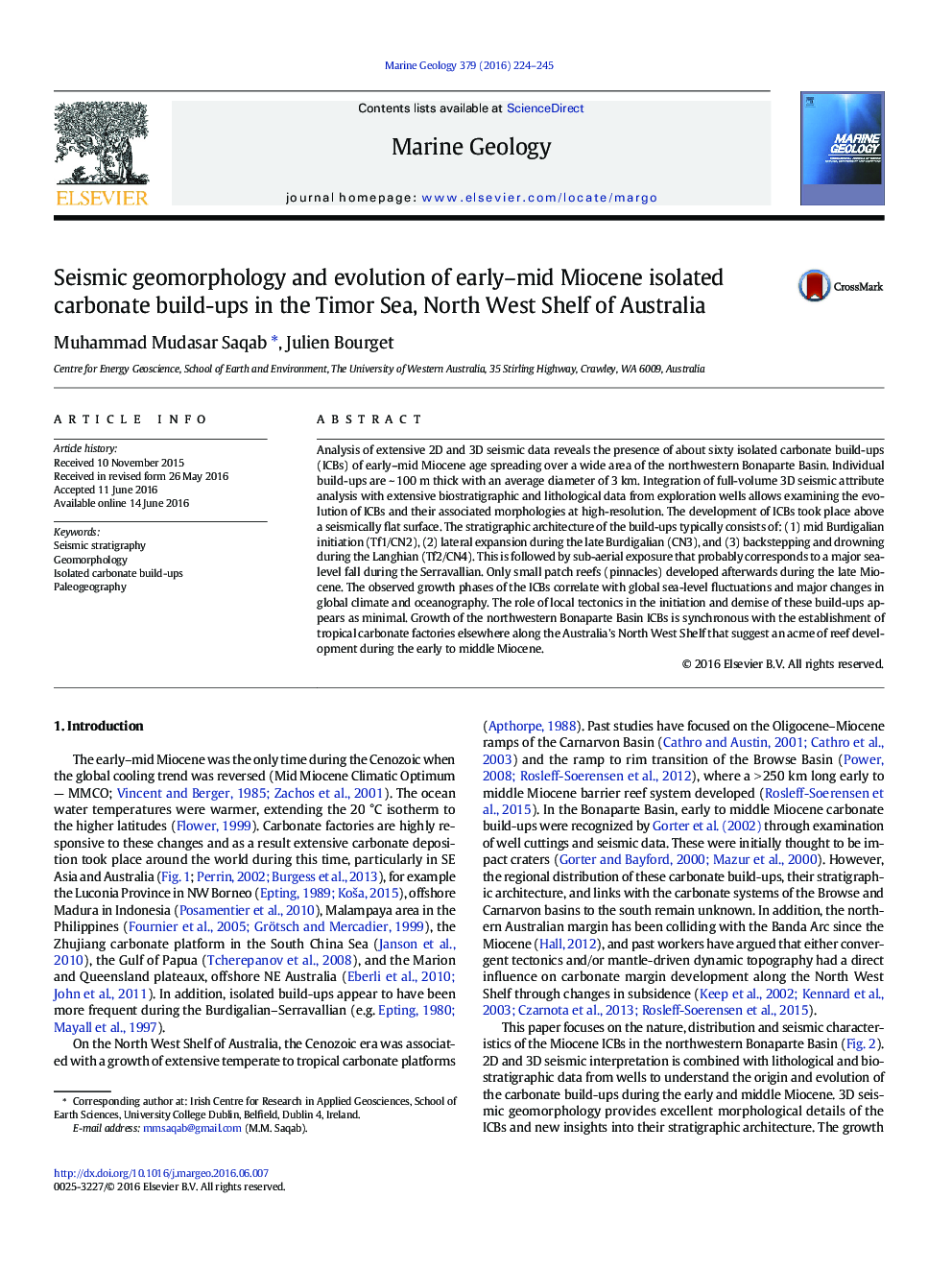| Article ID | Journal | Published Year | Pages | File Type |
|---|---|---|---|---|
| 6441379 | Marine Geology | 2016 | 22 Pages |
Abstract
Analysis of extensive 2D and 3D seismic data reveals the presence of about sixty isolated carbonate build-ups (ICBs) of early-mid Miocene age spreading over a wide area of the northwestern Bonaparte Basin. Individual build-ups are â¼Â 100 m thick with an average diameter of 3 km. Integration of full-volume 3D seismic attribute analysis with extensive biostratigraphic and lithological data from exploration wells allows examining the evolution of ICBs and their associated morphologies at high-resolution. The development of ICBs took place above a seismically flat surface. The stratigraphic architecture of the build-ups typically consists of: (1) mid Burdigalian initiation (Tf1/CN2), (2) lateral expansion during the late Burdigalian (CN3), and (3) backstepping and drowning during the Langhian (Tf2/CN4). This is followed by sub-aerial exposure that probably corresponds to a major sea-level fall during the Serravallian. Only small patch reefs (pinnacles) developed afterwards during the late Miocene. The observed growth phases of the ICBs correlate with global sea-level fluctuations and major changes in global climate and oceanography. The role of local tectonics in the initiation and demise of these build-ups appears as minimal. Growth of the northwestern Bonaparte Basin ICBs is synchronous with the establishment of tropical carbonate factories elsewhere along the Australia's North West Shelf that suggest an acme of reef development during the early to middle Miocene.
Related Topics
Physical Sciences and Engineering
Earth and Planetary Sciences
Geochemistry and Petrology
Authors
Muhammad Mudasar Saqab, Julien Bourget,
